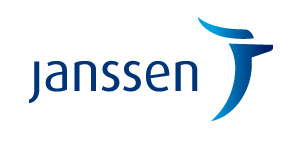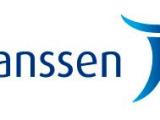Janssen Receives Positive CHMP Opinion Recommending IMBRUVICA® (ibrutinib) for the Treatment of Waldenström’s Macroglobulinemia
A rare B-cell lymphoma with no EMA-approved treatment options available
Beerse/Belgium, Friday, 22 May 2015 – Janssen-Cilag International NV (Janssen) announced today that the Committee for Medicinal Products for Human Use (CHMP) of the European Medicines Agency (EMA) adopted a positive opinion recommending a change to the terms of the marketing authorisation for IMBRUVICA® (ibrutinib) in the European Union, to indicate the treatment of adult patients with Waldenström’s macroglobulinemia (WM) who have received at least one prior therapy, or in first line treatment for patients unsuitable for chemo-immunotherapy.1 IMBRUVICA is co-developed by Cilag GmbH International (a member of the Janssen Pharmaceutical Companies) and Pharmacyclics, Inc. Janssen affiliates market IMBRUVICA in EMEA (Europe, Middle East and Africa) as well as the rest of the world, except for the United States, where Janssen Biotech, Inc. and Pharmacyclics. co-market it.
IMBRUVICA is already approved in Europe for the treatment of adult patients with relapsed or refractory mantle cell lymphoma (MCL), or adult patients with chronic lymphocytic leukaemia (CLL) who have received at least one prior therapy, or in first line in the presence of 17p deletion or TP53 mutation in patients unsuitable for chemo-immunotherapy.2 If approved by the European Commission, IMBRUVICA would become the first approved treatment for WM across the EU. It has also recently been approved in WM by the U.S. FDA.
“Janssen welcomes this positive opinion recommending the approval of an additional indication for IMBRUVICA,” said Jane Griffiths, Company Group Chairman, Janssen EMEA. “Waldenström’s macroglobulinemia is a serious blood cancer with no EMA-approved treatment options currently available. We are pleased to be one step closer to offering patients a targeted treatment for this rare disease.”
WM is a slow-growing and rare type of blood cancer.3,4 WM originates from B cells, a type of white blood cell (lymphocyte), and develops in the bone marrow.3,4 The median age at diagnosis is 63-68 years5,6 and incidence rates among men and women in Europe are approximately 7.3 and 4.2 per million persons, respectively.6
Genome sequencing of patients with WM has revealed a common mutation in the MYD88 gene. This mutation triggers the activation of the enzyme Bruton’s tyrosine kinase (BTK), which is a key component needed to regulate immune cell proliferation and cell survival which plays a part in B-cell malignancies, such as WM.7 IMBRUVICA forms a strong covalent bond with BTK, thereby inhibiting the enzyme and blocking the transmission of cell survival signals within the malignant B cells.8
The Phase 2 multi-centre study on which the CHMP recommendation was based evaluated the efficacy and tolerability of IMBRUVICA 420 mg once daily in 63 patients with previously treated WM (median age of 63; range, 44-86 years old). Updated results from the study were published on 8 April, 2015 in an online edition of The New England Journal of Medicine.9 The overall response rate using criteria adopted from the International Workshop on WM was 90.5 percent, 57 out of 63 patients. Eleven patients (17 percent) achieved a minor response, 36 patients (57 percent) achieved a partial response (PR) and 10 patients (16 percent) achieved a very good PR. The median times to at least minor and partial responses were four weeks and eight weeks, respectively.9
Secondary endpoints included progression free survival (PFS) and the safety and tolerability of IMBRUVICA in symptomatic patients with relapsing/remitting WM. The estimated two–year PFS and overall survival (OS) rates among all patients were 69.1 percent and 95.2 percent respectively.9
The most commonly occurring adverse reaction in the WM trial (14 patients, or 22 percent) was neutropenia (decreased amount of neutrophils in the blood). Thrombocytopenia (decrease in platelets in the blood) occurred in nine patients (14 percent), and other adverse events occurred in less than five patients (<10 percent) each. Four patients (six percent) in the WM trial receiving IMBRUVICA discontinued treatment due to neutropenia or thrombocytopenia. Additionally these two adverse events lead to dose reduction in three patients (five percent).9
About IMBRUVICA®
IMBRUVICA (ibrutinib) is a first-in-class Bruton's tyrosine kinase (BTK) inhibitor, which works by forming a strong covalent bond with BTK to block the transmission of cell survival signals within the malignant B cells.8 By blocking this BTK protein, IMBRUVICA helps kill and reduce the number of cancer cells. It also slows down the worsening of the cancer.10
IMBRUVICA is approved in Europe for the treatment of adult patients with relapsed or refractory mantle cell lymphoma (MCL), or adult patients with chronic lymphocytic leukaemia (CLL) who have received at least one prior therapy, or in first line patients with CLL in the presence of 17p deletion or TP53 mutation in patients unsuitable for chemo-immunotherapy;2 regulatory approval for additional uses has not yet been granted. Investigational uses for ibrutinib, alone and in combination with other treatments, are under way in several blood cancers including CLL, MCL, Waldenström's macroglobulinemia (WM), diffuse large B-cell lymphoma (DLBCL), follicular lymphoma (FL), multiple myeloma (MM) and marginal zone lymphoma (MZL).
IMBRUVICA is co-developed by Cilag GmbH International (a member of the Janssen Pharmaceutical Companies) and Pharmacyclics, Inc. Janssen affiliates market IMBRUVICA in EMEA (Europe, Middle East and Africa) as well as the rest of the world, except for the United States, where Janssen Biotech, Inc. and Pharmacyclics. co-market it. Janssen and Pharmacyclics are continuing an extensive clinical development programme for IMBRUVICA, including Phase 3 study commitments in multiple patient populations.
About Waldenström’s Macroglobulinemia
Waldenström’s macroglobulinemia (WM) is a slow-growing, incurable, rare type of B-cell lymphoma for which no established standard of care, or EMA-approved therapeutic, exists.3,4 WM begins with a malignant change to the B cell, a type of white blood cell (lymphocyte), during its maturation so that it continues to reproduce more malignant B cells. WM cells make large amounts of a certain type of antibody (immunoglobulin M, or IgM). Antibodies such as IgM normally help the body to fight infection. Excess IgM causes the blood to thicken and causes many of the symptoms of WM, including among others excess bleeding and problems with vision and the nervous system.3,4
Janssen in Oncology
In oncology, our goal is to fundamentally alter the way cancer is understood, diagnosed, and managed, reinforcing our commitment to the patients who inspire us. In looking to find innovative ways to address the cancer challenge, our primary efforts focus on several treatment and prevention solutions. These include a focus on haematologic malignancies, prostate cancer and lung cancer; cancer interception with the goal of developing products that interrupt the carcinogenic process; biomarkers that may help guide targeted, individualised use of our therapies; as well as safe and effective identification and treatment of early changes in the tumour microenvironment.
About Janssen
Janssen Pharmaceutical Companies of Johnson & Johnson are dedicated to addressing and solving the most important unmet medical needs of our time, including oncology (e.g., multiple myeloma and prostate cancer), immunology (e.g., psoriasis), neuroscience (e.g., schizophrenia, dementia and pain), infectious disease (e.g., HIV/AIDS, hepatitis C and tuberculosis), and cardiovascular and metabolic diseases (e.g., diabetes). Driven by our commitment to patients, we develop sustainable, integrated healthcare solutions by working side-by-side with healthcare stakeholders, based on partnerships of trust and transparency. More information can be found on www.janssen-emea.com. Follow us on www.twitter.com/janssenEMEA for our latest news.
(This press release contains "forward-looking statements" as defined in the Private Securities Litigation Reform Act of 1995 regarding the recommendation by the CHMP for the approval of a new indication. The reader is cautioned not to rely on these forward-looking statements. These statements are based on current expectations of future events. If underlying assumptions prove inaccurate or known or unknown risks or uncertainties materialize, actual results could vary materially from the expectations and projections of Janssen-Cilag International NV and/or Johnson & Johnson. Risks and uncertainties include, but are not limited to: uncertainty of commercial success; competition, including technological advances, new products and patents attained by competitors; challenges to patents; product efficacy or safety concerns resulting in product recalls or regulatory action; changes in behavior and spending patterns or financial distress of purchasers of health care products and services; changes to applicable laws and regulations, including global health care reforms; manufacturing difficulties and delays; and trends toward health care cost containment. A further list and description of these risks, uncertainties and other factors can be found in Johnson & Johnson’s Annual Report on Form 10-K for the fiscal year ended December 28, 2014, including in Exhibit 99 thereto, and the company’s subsequent filings with the Securities and Exchange Commission. Copies of these filings are available online at www.sec.gov, www.jnj.com or on request from Johnson & Johnson. None of the Janssen Pharmaceutical Companies or Johnson & Johnson undertakes to update any forward-looking statement as a result of new information or future events or developments.)
References
- European Medicines Agency. Committee for Medicinal Products for Human Use: Summary of opinion. Available at http://www.ema.europa.eu/docs/en_GB/document_library/Summary_of_opinion/human/003791/WC500187054.pdf. Last accessed May 2015
- European Medicines Agency. Committee for Medicinal Products for Human Use: Summary of opinion. Available at: http://www.ema.europa.eu/docs/en_GB/document_library/Summary_of_opinion_-_Initial_authorisation/human/003791/WC500170191.pdf. Last accessed March 2015.
- American Cancer Society. Detailed guide: Waldenstrom macroglobulinemia. Available at: http://www.cancer.org/acs/groups/cid/documents/webcontent/003148-pdf.pdf Last accessed March 2015.
- Leukemia and Lymphoma Society. Waldenström macroglobulinemia facts. Available at: http://www.lls.org/content/nationalcontent/resourcecenter/freeeducationmaterials/lymphoma/pdf/waldenstrommacroglobulinemia.pdf. Last accessed March 2015.
- Fonseca R, Hayman S. Waldenström macroglobulinaemia. Br J Haematol. 2007;138:700-20.
- Buske C, Leblond V, Dimopoulos M, et al. Waldenström’s macroglobulinaemia: ESMO Clinical Practice Guidelines for diagnosis, treatment and follow-up. Ann Oncol. 2013;24(Suppl. 6):vi155–vi159.
- Yang G, Xu L, Zhou Y, et al. Participation of BTK in MYD88 signaling in malignant cells expressing the L265P mutation in Waldenstrom’s macroglobulinemia, and effect on tumor cells with BTK-inhibitor PCI-32765 in combination with MYD88 pathway inhibitors. J Clin Oncol. 2012;30(Suppl.):abstract 8106.
- O’Brien S, Furman RR, Coutre SE, et al. Ibrutinib as initial therapy for elderly patients with chronic lymphocytic leukaemia or small lymphocytic lymphoma: an open-label, multicentre, phase 1b/2 trial. Lancet Oncol. 2014;15:48-58.
- Treon SP, Tripsas CK, Meid K, et al. Ibrutinib in previously treated Waldenström’s macroglobulinemia. N Engl J Med. 2015;372:1430-40.
- European Medicines Agency. How is the medicine expected to work? http://www.ema.europa.eu/ema/index.jsp?curl=pages/medicines/human/orphans/2012/06/human_orphan_001058.jsp&mid=WC0b01ac058001d12b. Last accessed March 2015.
PHEM/IBR/0315/0002
May 2015
Blood Cancers Infographic

Waldenström’s Macroglobulinemia (WM)

Translations
FrenchGerman
Spanish
Media Inquiries:
Natalie Buhl
Mobile: +353 (0)85 744 6696
Email: [email protected]
Investor Relations:
Lesley Fishman
Phone: +1 732-524-3922
Louise Mehrotra
Phone: +1 732-524-6491


